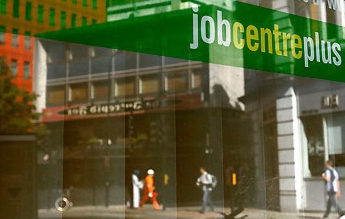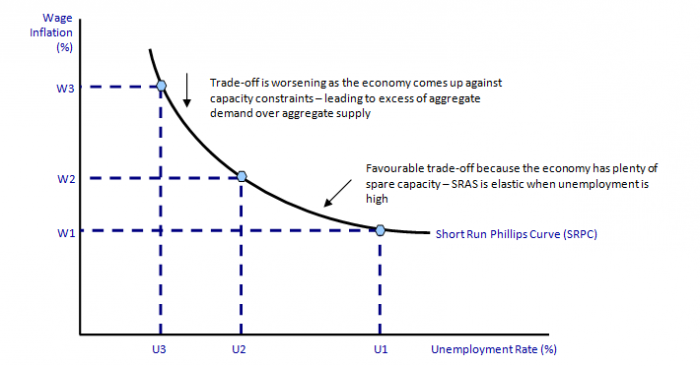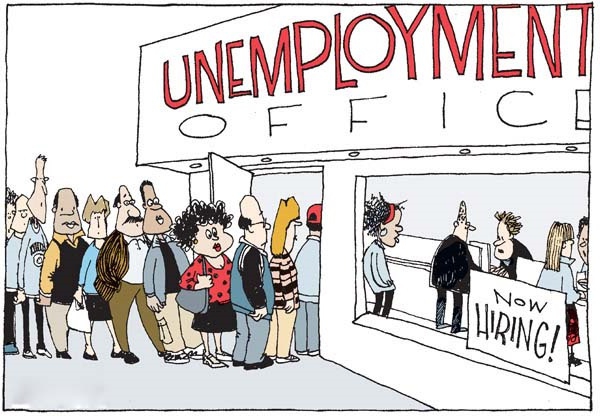Quite a long period of time labor market as an economic category was perceived as a phenomenon that is inherent only in capitalist countries. Unemployment was seen as a consequence of specific relationships that took place within its framework and appeared due to the endless contradictions of labor and capital.
The transition to a market economy in our country has exposed the old problems of employment. He also added a number of new ones related to the structural restructuring of our economy, the emergence of a new type of labor relations, which are caused by various forms of ownership. The consequence of this was the release of employees from large enterprises during the transition to market relations and their replenishment of the ranks of the unemployed. However, to perceive this socio-economic category as a phenomenon of a transition period is undoubtedly erroneous. It is interconnected with economic evolution, with a change in demand for labor and the social status of the employee himself. And also with the disadvantages of legal regulation of the labor market and related relations.
It is impossible to completely get rid of unemployment, but it is accessible to minimize it, while smoothing out the political, social and ethical consequences of the inadequate provision of employment for the able-bodied population.
Employment and Unemployment: Theoretical Aspects
The second category is an integral characteristic of the market economy of our country. Unemployment is a socio-economic phenomenon in which part of the working population is not employed in the production sector. It is a consequence of the excess of labor supply over demand for it.
The share of the unemployed depends on the economic growth rate and labor efficiency existing for a specific period of time, as well as on the degree to which the classification and professional skills of workers correspond to current demand, the existing demographic situation, and the state employment policy.
Concepts of interpreting the phenomenon of unemployment
Supporters of the Keynesian concept and the classical one have completely opposite points of view. The latter interpret this concept as an imperfection of the labor market (microeconomic reasons), and the former from the standpoint of macroeconomics as a deficit of aggregate economic demand.
According to Keynesians, unemployment appears due to the "rigidity" of wages. With a shift in the labor demand curve, which is caused by the fall in all aggregate demand in the economy, the salary threshold remains unchanged. In this regard, there is a gap in the level of supply and demand, subject to a fixed salary.
Classification of the category in question
There are 2 forms of unemployment:
- Forced (there is a desire and opportunity to work, but there is no offer, it may be associated with a decrease in production volumes).
- Voluntary, or unemployment expectations (the result of the "rigidity" of earnings and, as a result, a lack of jobs).
These are precisely forms of unemployment, and there are also its types. They are presented in the table below.
| General distinction | main reason | The main types of unemployment |
| Keynesian | Imbalance in macroeconomic equilibrium | Functional (friction)
Seasonal Institutional Cyclical (demand shortages) Structural Excess offer |
| Classic | Macroeconomic reasons: imperfection of the existing labor market |
- Functional type manifested as a result of the movement of employees from one workplace to another. This is a consequence of short-term dynamics in the labor market. This type exists due to the lengthy procedure for selecting personnel and jobs. Functional unemployment is fundamentally unavoidable. It is present in every economic system.
- Seasonal Type unemployment occurs due to fluctuations in the level of economic activity throughout the year, which are characteristic of some industries.
- Institutional type manifested due to the lack of efficiency of labor market organization. For example, due to incomplete information about the availability of current vacancies.
- Structural unemployment, in fact, acts as an in-depth form of friction. This type arises as a result of long-term dynamics in the economic structure, which leads to a significant discrepancy between the existing qualifications or the profession of workers with the qualification or professional requirements necessary for a particular workplace. Territorial structural inconsistencies can also be observed. (Friction type and structural are quite similar at first glance. In the first case, the unemployed have skills that can be sold, and in the second, they cannot get a job right away due to insufficient qualifications. So, we can say that functional unemployment is short-term, structural unemployment is longer in time, which is why it is considered a more serious problem.)
- Unemployment Oversupply - a consequence of the imbalance in the labor market (for example, in a situation where the level of salary is higher than the existing equilibrium). This type is considered forced, nonequilibrium.
- You can also highlight such a variation of the phenomenon under consideration, as hidden (latent) unemployment. In short, these are people who are not related to the economically active population at a particular point in time. However, they would like to enter this category provided that they are provided with suitable work.
Typology of the category under consideration by K. Marx
Its basis is the ability of the unemployed to re-enter the work environment due to the stretching of this phenomenon in time. So, according to K. Marx, unemployment happens:
- Flowing (periodic “pushing away” and “pulling” of labor in the labor market).
- Stagnant (long-term unemployment, which alternates with short-term random employment). It most often covers the share of the labor force that is the least professionally trained (unskilled people, former housewives, etc.) and can last for more than one year.
The natural level of unemployment is a special ideal level of this socio-economic phenomenon. Within it, it is placed in a specific framework within whose borders a state of required economic stability and a regime of substantial effective growth are achieved.
The natural level of unemployment should correspond to potential GNP (the maximum possible real volume of gross national product with full employment of both labor and other resources that are suitable for production).
Interpretation of the concept of employment
This category can be deciphered as the totality of certain economic relations that are associated with providing jobs, as well as with participation in extensive economic activity.
It is customary to distinguish the entire population into economically inactive and active. Employment outlines a very important aspect of the social evolution of man, which is associated with the satisfaction of his existing labor needs.As a socio-economic category, it characterizes activities that are associated with the satisfaction of social and personal needs, does not contradict the law and brings a person earnings (labor income).
In accordance with the ILO, a citizen who does not carry out labor activity, but is capable of work and is actively searching for it over the past 4 weeks, is recognized as unemployed.
As for the employed, these are people over the age of 16 who work for hire for a certain fee or for themselves (self-employment), are on vacation or temporarily do not carry out any activity due to illness.
Classification of the category in question
Based on qualitative and quantitative characteristics, allocate employment:
- full (everyone is provided with work);
- freely chosen (the right to employment or unemployment);
- hidden (unofficial side jobs);
- pendulum (employment and unemployment are constantly alternating);
- productive or efficient (brings workers income);
- incomplete (only a part of the entire economically active population works);
- seasonal (work at certain times of the year);
- periodic (alternating work and even periods of rest).
According to the ILO, the phenomenon in question is of three categories:
- employed (labor force);
- unemployed (the active part of the population in a certain period of time);
- outside the workforce (the rest of the population, not having employment, not carrying out its search, not expressing a desire to work, as well as persons who have not reached working age).
Thus, any government policy to combat unemployment should be carried out in two directions:
- Development of measures to stimulate job growth.
- Implementation of measures to reduce layoffs.

Unemployment and inflation: Phillips curve
According to the official data of the survey (January 2009), approximately 61% of Russians are sure that these two phenomena are the main problems of Russia. Their relationship is expressed by the Phillips curve and is a manifestation of the cyclical nature of the economic side of the development of our country.
So, in the figure below you can see that the recession phase (the beginning of a fall in prices) reflects an increase in unemployment, and the upward phase (inflation growth) reflects its reduction. The peak in economic activity is accompanied by accelerated depreciation of the money supply and the lowest unemployment rate. It can be seen that unemployment and inflation reach their maximum level at the lowest and highest points of the economic cycle, respectively. But at the point where the “bottom” of the cycle is formed, on the contrary, the indicator of the considered negative socio-economic phenomenon will be the highest, and the rate of depreciation of money - the lowest.

O. Phillips investigated the relationship between the dynamics of the inflation rate (growth rate w / w) and unemployment. On the abscissa axis, he set aside the percentage growth rate of unemployment (U), and on the ordinate axis, the wage rate (W). Recovery phase: inflation growth rate is high, and unemployment rate is low (W₃; U₃). Recession Phase: rate of increase salaries are low, and unemployment is high (W₁; U₁). The middle position (W₂; U₂) reflects a state characterized by sustainable economic development (the optimal ratio of wage growth to unemployment).
State regulation of employment
The state struggle against unemployment is carried out through a system of social shock absorbers (protection devices) used to ensure the safety of workers (its economic side). The first element of the system is the regulation of the level of employment.
The state’s struggle against unemployment is reduced to solving the problem of achieving full employment in the macroeconomics framework: ensuring the balance of the able-bodied part of the population and the required number of jobs for it.This requires the formulation and implementation of a set of relevant measures aimed at reducing the level of the socio-economic phenomenon under consideration.
Measures to combat unemployment are diverse. They vary depending on the type of socio-economic phenomenon.
Macroeconomic measures help reduce unemployment, which is caused by a shortage of demand (aggregated). A focused, clearly fixed policy will allow increasing this demand through the growth of government spending, lowering tax rates, as a result of which the demand for labor and, accordingly, employment will begin to increase.
In the framework of monetary policy, by increasing the supply of money, bank interest can be reduced, as a result of which there will be an increase in consumer demand, and hence aggregated demand. Ultimately, this will lead to an increase in the employment rate.
Microeconomic measures - state measures directly related to the labor market, with which you can reduce the level of both the cyclical and the natural type of this phenomenon.
The state struggle against unemployment results in the application of active and passive measures. The first are aimed at reducing unemployment rate and the second - to mitigate its negative effects.

How to overcome this negative phenomenon from the point of view of the state?
State regulation is a multi-level process, which generally consists of 3 levels. Each of them uses the appropriate methods to combat unemployment:
- macrolevel;
- regional;
- micro level.
The highest executive and legislative authorities within the macro level are called upon to solve the main tasks, such as:
- The policy of social support and employment of the unemployed. These include current tasks such as improving the Ministry of Labor and Social Development, including the employment service and other structures. Development of their competent policy.
- Coordination of demographic, migration, social policies with the priorities and goals of labor market regulation. This is achieved by minimizing the outflow of classified personnel abroad, limiting illegal and undesirable forms of immigration, regulating income (labor prices), and promoting the employment of such a population as registered refugees and internally displaced persons.
- Coordination of structural, foreign economic, financial and credit, investment policies in order to regulate the labor market. Here, decisions should be considered regarding the implementation of state orders and state purchases of products, primarily infrastructure, social, defense and environmental purposes, as well as state programs of investment orientation, state subsidies, loans, subsidies and tax benefits that should be aimed at supporting and developing production ( primarily in priority sectors). A task of exceptional importance is the regulation of relations of foreign economic orientation in the interests of increasing employment.
State regulation at the regional level should be carried out in the same areas as at the macro level, and apply the same methods of combating unemployment. At this level, programs for transport, production and housing construction, government procurement of products of enterprises of any form of ownership, provision of loans, tax benefits, subsidies to companies aimed at supporting and developing production in priority sectors should also be developed and implemented. It is at the regional level that such methods of combating unemployment are more effective that are implemented by stimulating farming, small and individual businesses.
How to deal with this phenomenon in Russia?
Common measures for all forms of unemployment include:
- payment of related benefits;
- the formation of effective employment services.
Specific measures to combat exclusively the frictional type of unemployment include:
- improving the system of collecting and providing information regarding the availability of vacancies (not only within the given settlement, but also in other cities, regions);
- the formation of highly specialized services in this area.
Struggle against structural unemployment involves the following measures:
- the formation of public services and institutions focused on retraining and retraining of personnel;
- stimulation of the activities of private services in this area.
Means of combating the cyclic type of this phenomenon are as follows:
- the development and implementation of stabilization policies aimed at preventing serious production downturns and, as a result, mass unemployment;
- taking measures to create additional jobs in the public sector of the economy.
The fight against unemployment in Russia is carried out in accordance with the 2009 Presidential Anti-Crisis Program, which aims to eliminate the negative effects of the crisis, as well as tensions in the labor market, and to reduce unemployment. The total amount allocated from the budget to support regional labor markets in 2010 amounted to 36.4 billion rubles. A substantial part of the allocated funds is aimed at the implementation of measures of a passive nature, namely the payment of due benefits.
The fight against unemployment in our country is carried out in the framework of the above program, which includes a number of points:
- Organization community service. So, in the regions, those who lost their permanent salary were employed in them. The most common types of public works: landscaping, repair and restoration of cultural monuments, street cleaning, public transport services.
- Formation of additional jobs (stimulation of small business).
- State support through the issuance of a loan for your own business.
- Payment of benefits. Minimum size unemployment benefits in our country is 850 rubles., the maximum - 4900 rubles. The average value of this allowance is 2700 rubles.
- Activities to assist students (organization of internships for graduates).
- Providing retraining opportunities.
Despite the fact that the above measures have a number of shortcomings and require improvement, the fight against unemployment by the end of 2010 has borne fruit in the form of a 2.8% reduction in unemployment.








